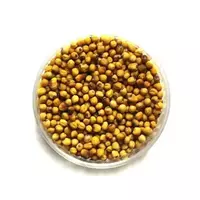Rapeseed

Rapeseed or Brassica napus are classified as plants that belong to the Cabbage family. Rapeseed is not unreasonably classified as an important plant that is cultivated on an industrial scale for the subsequent processing and production of derivatives, for example rapeseed oil. In addition, rapeseed seeds are currently used to make an alternative plant fuel called biodiesel. What is surprising is that there is no such plant as rapeseed in the natural habitat or in the wild.
However, even 4 thousand years before the onset of our era, humanity began to actively use the seeds of rapeseed. Researchers believe that rapeseed is a natural natural hybrid, which was obtained thanks to the crossing of ordinary vegetable cabbage, as well as winter gruel. It is also worth noting that scientists have not come to a consensus on the plant's homeland. It is believed that rapeseed first appeared in the Mediterranean region. Currently, not only cultivated, but also wild rape is found in European territory. such a plant is classified as a weed and is not used for processing.
It is worth emphasizing that in some countries the word rapeseed is understood not only as a well-known plant blooming with bright yellow flowers. Often, rape is understood as surepitsa cabbage, sisiya or even Sarept mustard. Rapeseed is a rather unpretentious plant that can perfectly tolerate both changes in temperature and weather troubles. Currently, there are two main types of rapeseed that differ not only in their appearance and structure, as well as in biological characteristics and parameters.
Types of rapeseed
The following types of rapeseed are distinguished: spring rape or annual plant; winter rapeseed or biennial plant perfectly tolerates subzero temperatures and is designed to produce feed for cattle as well as poultry. However, in addition to the above types of rapeseed, there are a sufficient number of plant clones. For example, canola vegetable oil is made from specially bred Canadian rapeseed, which is used in cooking as an alternative to other varieties of culinary oils and fats.
Rape seeds are considered an important natural product from which valuable vegetable oil is made. In addition, rapeseed grotto or already processed rapeseed seeds are widely used. Typically, such rapeseed seeds are used in the feed making process. Many scientists today claim that rapeseed is the hope of all mankind, since it is on the basis of this plant that a new type of vegetable fuel or biodiesel is made. Plus, rapeseed is considered an excellent honeycomb. Rapeseed honey is distinguished not only by its excellent taste, but also by its consumer characteristics.
rapeseed seeds 544 kCal
Energy value of rapeseed seeds (Ratio of proteins, fats, carbohydrates - ju):
Proteins: 30.8 g (~ 123 kCal)
Fats: 43.6 g (~ 392 kCal)
Carbohydrates: 7.2 g (~ 29 kCal)
Energy ratio (bj | y): 23% | 72% | 5%
 Español
Español Français
Français Português
Português Русский
Русский 简体中文
简体中文 繁體中文
繁體中文 日本語
日本語 한국어
한국어 العربية
العربية Türkçe
Türkçe Қазақ
Қазақ Deutsch
Deutsch Italiano
Italiano Українська
Українська
